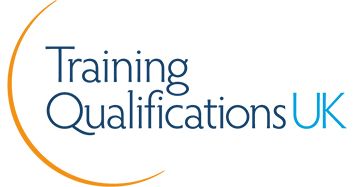Autism Awareness - Advanced
 85.5%
85.5%
- SALE Savings End Midnight Wednesday 30th April
- SALE Savings End Midnight Wednesday 30th April
Autism Awareness - Advanced
This Autism Awareness Advanced course builds on the Autism Awareness course. It covers key discoveries and claims in the history of the condition and outlines modern research surrounding the autism spectrum. The course also covers the educational context for autism, including communication and Theory of Mind, and outlines approaches and common issues regarding care and therapeutic interventions.
Modules
Module One: ASD Overview
At the end of Module One, learners should be able to:
- explain what ‘autism spectrum’ means
- describe the main symptoms and manifestations of autism relating to the core ‘triad’ of difficulties in social communication, social interaction, and social imagination
- outline the main diagnostic sub-groups (Asperger’s, Autism, PDD-NOS) within the autism spectrum family of conditions
- outline the ways symptoms vary in their expression and severity between individuals and sub-groups on the spectrum, and between specific age groups (children, teens, adults)
Module Two: History of autism diagnosis
At the end of Module Two, learners should be able to:
- outline key discoveries in the history of autism research and practice
- consider procedures and some of the problems involved in identifying and diagnosing autistic conditions (children, teens, adults; males, females)
- critically consider claims concerning the prevalence of autism across different time periods and in different populations
Module Three: Modern science supporting the condition
At the end of Module Three, learners should be able to:
- outline the explanations – particularly psychological and biological – of what is currently known about the causes and manifestations of autism
- outline recent psychological and biological research findings concerning the causes of autism
- understand some of the scientific research areas through which autism is being explored and how these can help people with autism
Module Four: Education, communication and theory of mind
At the end of Module Four, learners should be able to:
- discuss the implications of autism on education, and consider what educational options may be available for the child or young person on the autism spectrum
- explain Theory of Mind, especially with regards to communication, and the difficulties that can arise from an underdeveloped Theory of Mind.
- outline interventions that have been developed by psychologists to teach autistic children theory of mind, and to assist them with false-belief training.
Module Five: Intervention and support
At the end of Module Five, learners should be able to:
- outline the main approaches to care and therapeutic interventions for people on the autism spectrum
- discuss issues that relate to family, social support services, and adulthood in people on the spectrum
- outline the differences in assumptions about autism within ethnic minorities and across the world, and how these affect provision for people with autism
Entry Requirements
There is no experience or previous qualifications required for enrolment on this course. It is available to all students, of all academic backgrounds.
All course fees, inclusive of all payment plans including our Premium Credit Limited option, must be settled before certification can be ordered.
*You will have access to the course for 24 months.
On successful completion of your course you will receive the learndirect Certificate of Completion of Training in Autism Awareness - Advanced.
Your course certificate will also state the number of CPD points/hours the course is eligible for.
View a sample of the certificate (opens in new window)
learndirect is one of the largest integrated providers of courses and qualifications, training, and employment services in the UK
- Each year around 6,000 businesses equip their staff for success with learndirect
- learndirect have helped more than 75,000 businesses equip their employees with the skills needed to improve productivity.
- Almost 700,000 maths and English test passes have been achieved with learndirect.
- 300,000 people fulfilled their career ambitions last year with learndirect.
- Over 250,000 apprentices have achieved with learndirect.
- SALE Savings End Midnight Wednesday 30th April
- SALE Savings End Midnight Wednesday 30th April
Autism Awareness - Advanced
This Autism Awareness Advanced course builds on the Autism Awareness course. It covers key discoveries and claims in the history of the condition and outlines modern research surrounding the autism spectrum. The course also covers the educational context for autism, including communication and Theory of Mind, and outlines approaches and common issues regarding care and therapeutic interventions.
Modules
Module One: ASD Overview
At the end of Module One, learners should be able to:
- explain what ‘autism spectrum’ means
- describe the main symptoms and manifestations of autism relating to the core ‘triad’ of difficulties in social communication, social interaction, and social imagination
- outline the main diagnostic sub-groups (Asperger’s, Autism, PDD-NOS) within the autism spectrum family of conditions
- outline the ways symptoms vary in their expression and severity between individuals and sub-groups on the spectrum, and between specific age groups (children, teens, adults)
Module Two: History of autism diagnosis
At the end of Module Two, learners should be able to:
- outline key discoveries in the history of autism research and practice
- consider procedures and some of the problems involved in identifying and diagnosing autistic conditions (children, teens, adults; males, females)
- critically consider claims concerning the prevalence of autism across different time periods and in different populations
Module Three: Modern science supporting the condition
At the end of Module Three, learners should be able to:
- outline the explanations – particularly psychological and biological – of what is currently known about the causes and manifestations of autism
- outline recent psychological and biological research findings concerning the causes of autism
- understand some of the scientific research areas through which autism is being explored and how these can help people with autism
Module Four: Education, communication and theory of mind
At the end of Module Four, learners should be able to:
- discuss the implications of autism on education, and consider what educational options may be available for the child or young person on the autism spectrum
- explain Theory of Mind, especially with regards to communication, and the difficulties that can arise from an underdeveloped Theory of Mind.
- outline interventions that have been developed by psychologists to teach autistic children theory of mind, and to assist them with false-belief training.
Module Five: Intervention and support
At the end of Module Five, learners should be able to:
- outline the main approaches to care and therapeutic interventions for people on the autism spectrum
- discuss issues that relate to family, social support services, and adulthood in people on the spectrum
- outline the differences in assumptions about autism within ethnic minorities and across the world, and how these affect provision for people with autism
Entry Requirements
There is no experience or previous qualifications required for enrolment on this course. It is available to all students, of all academic backgrounds.
All course fees, inclusive of all payment plans including our Premium Credit Limited option, must be settled before certification can be ordered.
*You will have access to the course for 24 months.
Qualifications
On successful completion of your course you will receive the learndirect Certificate of Completion of Training in Autism Awareness - Advanced.
Your course certificate will also state the number of CPD points/hours the course is eligible for.
View a sample of the certificate (opens in new window)
learndirect is one of the largest integrated providers of courses and qualifications, training, and employment services in the UK
- Each year around 6,000 businesses equip their staff for success with learndirect
- learndirect have helped more than 75,000 businesses equip their employees with the skills needed to improve productivity.
- Almost 700,000 maths and English test passes have been achieved with learndirect.
- 300,000 people fulfilled their career ambitions last year with learndirect.
- Over 250,000 apprentices have achieved with learndirect.
 85.5%
85.5%
learning
learning hours





















 If you find this course cheaper anywhere
If you find this course cheaper anywhere

